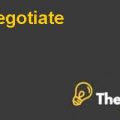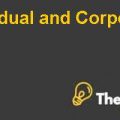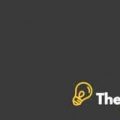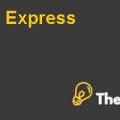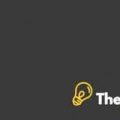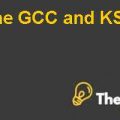TSE International Corporation Case Study Solution
Therefore, the issuance of more debt in comparison to equity means that the company would have to pay more payment of interest out of profit before investors get paid their return i.e. dividends. The increased payment of interest increases the dividend payment volatility to stockholders, because in case of any unfavorable event the company must pay interest to bank, which could affect the ability of company to pay dividends. This increases the financial risk to investors. In case of increased financial risk, the investors would require greater return to be compensated for the increased risk, this in turn increases the cost of equity and lead to increase in weighted average cost of capital. The optimal capital structure is the balance between costs of both equity financing and debt financing. The low weighted average cost of capital would result in greater cash flows and high enterprise value.
Payout Policy Assessment
The TSE International Corporation uses cash dividends to make payments to investors out of its earnings as it can be seen in the Exhibit 3 provided in the case that from 1995 to 1999, the company has been using cash dividends to pass on its shareholders and it is estimated that TSE would use the similar policy in the forthcoming years.
Referring to the Exhibit 3 in the case, it can be analyzed that the net income of the company would be increasing with the passage of time which shows that the company has growth potential due to which it is recommended that the company should use stock dividend to pay out its stockholders it is due to the fact that the company wants to foster goodwill among investors, communicate shareholder value and financial well-being, drive demand for stock and reinvest its earnings to increase value so, holding cash would help the company to invest as much as possible into further growth.
Post-Merger Integration (PMI) & its Significance
The success of any merger and acquisition highly and entirely depends on effective process of post-merger integration, yet crafting a long term integration process is one of the most significant and challenging stage of the overall merger and acquisition process. There are many reasons which are accountable for the failure of deal which includes low synergies, high complexity, poor integration and difficult cultural fit. The rational economical as well as financial model drives the successful merger and acquisition. The financial components include cost saving, purchase price and revenue increases contributes to success and failure of merger and acquisition whereas the non-financial factors includes leadership, integration, culture and overall strategy. The integration leader’s role is to effectively managing the activities of integration to help adapt to new capabilities, enhance organizational post-merger capacity and minimize intercultural and interpersonal friction. The synergetic benefit realization of post-merger is made viable because of the successful integration efforts and incentives and motivation. The incentives and motivation encouraged integration leaders to improve the expertise to communicate to key talent in order to reassure that the workforce are given importance by providing generous positive feedback to them. The activities of post-merger integration are regarded as a critical factor which is responsible to capture the synergies identified at the merger & acquisition outset. Post-merger integration is key to each and every deal. During the process of PMI, the executives take the responsibility for achieving the operational and financial goal in timely manner. A deeper insights into the process of integration is significant for successful post-merger implementation. One of the main reason to get engage in merger and acquisition is to be innovative and acquire operational and financial synergies. If the process of post-merger integration runs efficiently and smoothly, the performance of innovation is higher.
Appendix
| 2000 | 2001 | 2002 | 2003 | 2004 | |
| Sales | $59,600 | $66,000 | $73,200 | $81,200 | $90,000 |
| Cost of goods sold | $42,316 | $47,850 | $52,704 | $58,058 | $63,900 |
| Gross profit | $17,284 | $18,150 | $20,496 | $23,142 | $26,100 |
| Selling, general, & admin. expenses | $3,612 | $4,024 | $4,464 | $4,952 | $5,492 |
| Other income, net | $240 | $264 | $288 | $320 | $352 |
| Income before taxes | $13,912 | $14,390 | $16,320 | $18,510 | $20,960 |
| Taxes | $5,565 | $5,756 | $6,528 | $7,404 | $8,384 |
| Profit after tax | $8,347 | $8,634 | $9,792 | $11,106 | $12,576 |
| Change in NWC | $3,492 | $3,867 | $4,289 | $4,757 | $5,273 |
| Capital expenditure | $1,826 | $2,011 | $2,213 | $2,433 | $2,675 |
| Depreciation | $1,660 | $1,828 | $2,012 | $2,212 | $2,432 |
| Free cash flows | $4,689 | $4,584 | $5,302 | $6,127 | $7,060 |
| Terminal value | $74,276 | ||||
| PV of cash flows | $18,053 | ||||
| PV of terminal value | $36,961 | ||||
| Enterprise value | $55,013 | ||||
| Theoretical share price | $38.20 | ||||
| Terminal value – EV/EBITDA | $28,239 | ||||
| PV of terminal value | $14,052 | ||||
| Enterprise value | $32,105 | ||||
| Theoretical share price | $22.30 | ||||
This is just a sample partical work. Please place the order on the website to get your own originally done case solution.
How We Work?
Just email us your case materials and instructions to order@thecasesolutions.com and confirm your order by making the payment here

